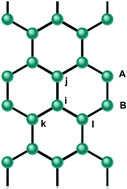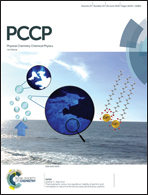Influence of quasi-particle density over polaron mobility in armchair graphene nanoribbons
Abstract
An important aspect concerning the performance of armchair graphene nanoribbons (AGNRs) as materials for conceiving electronic devices is related to the mobility of charge carriers in these systems. When several polarons are considered in the system, a quasi-particle wave function can be affected by that of its neighbor provided the two are close enough. As the overlap may affect the transport of the carrier, the question concerning how the density of polarons affect its mobility arises. In this work, we investigate such dependence for semiconducting AGNRs in the scope of nonadiabatic molecular dynamics. Our results unambiguously show an impact of the density on both the stability and average velocity of the quasi-particles. We have found a phase transition between regimes where increasing density stops inhibiting and starts promoting mobility; densities higher than 7 polarons per 45 Å present increasing mean velocity with increasing density. We have also established three different regions relating electric field and average velocity. For the lowest electric field regime, surpassing the aforementioned threshold results in overcoming the 0.3 Å fs−1 limit, thus representing a transition between subsonic and supersonic regimes. For the highest of the electric fields, density effects alone are responsible for a stunning difference of 1.5 Å fs−1 in the mean carrier velocity.



 Please wait while we load your content...
Please wait while we load your content...